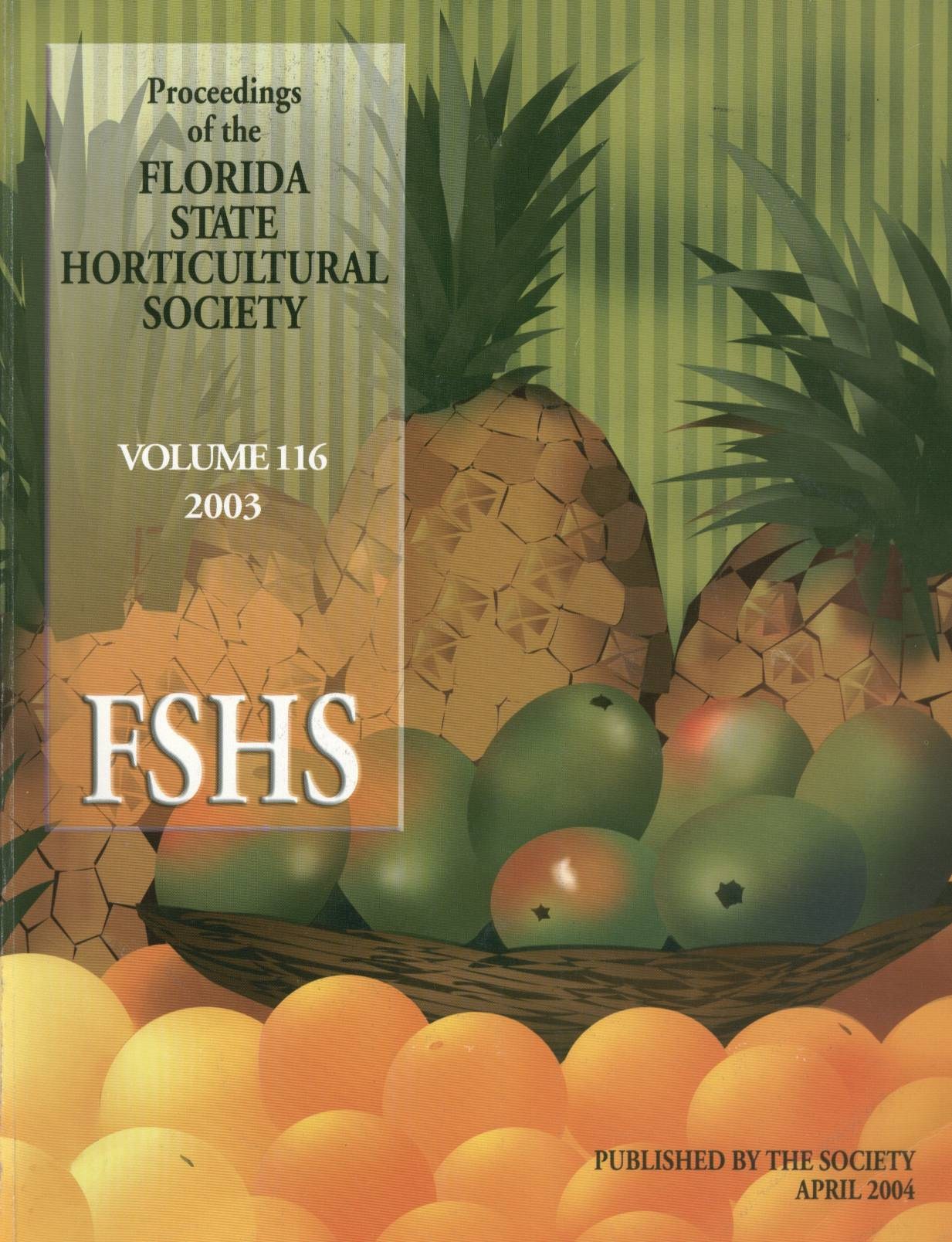Abstract
Strawberry (Fragaria × ananassa Duch.) cultivars are almost exclusively bred for field production, and limited information on their performance under protected cultivation in the U.S. is available. Seven strawberry cultivars were grown in a passively ventilated greenhouse in north-central Florida to evaluate their fruit yield and quality potential, and susceptibility to powdery mildew and aphid infestation. In October, plug transplants were planted at a density of 22 plants per m in Polygal ; troughs filled with pine bark. No insecticides or fungicides were used, but the biological control agents Aphidius colemani Viereck and Lysiphlebus testaceipes Cresson were used for controlling cotton aphids (Aphis gossypii Glover), and Neoseiulus californicus McGregor for controlling twospotted spider mites (Tetranichus urticae Koch.). Early season yield (November-January), from FL97-39 was significantly greater than that of 'Strawberry Festival', 'Sweet Charlie' and 'Earlibrite', but not significantly different than that obtained from 'Carmine', 'Camarosa' and 'Treasure'. Total season yields (November-March) from FL97-39 and 'Carmine' were significantly higher than 'Camarosa' and 'Sweet Charlie', but not significantly different from 'Strawberry Festival', 'Treasure', and 'Earlibrite'. Percent marketable yield of 'Treasure' was higher than 'Camarosa' and 'Sweet Charlie', but not significantly different from the other cultivars. FL97-39 was very highly susceptible to powdery mildew (Sphaerotheca macularis), 'Earlibrite' had high susceptibility, whereas the rest of the cultivars showed moderate susceptibility. Aphid infestations were most severe in 'Sweet Charlie' and 'Carmine', whereas significantly lower number of aphids was observed on the other cultivars. Fruit quality variables such as firmness, soluble solids content, titratable acidity, and ascorbic acid concentration were excellent during the early part of the season (November-January), but declined during the latter part of the season (February-March), with the exception of fruit color, which was more red during the mid-season (January-February) compared to the early and later part of the season. Thus, Florida strawberry cultivars such as FL97-39, 'Carmine', 'Treasure', and 'Strawberry Festival' evaluated in this study performed well under protected culture in north-central Florida, however, cultivar selection should be made after considering susceptibility to fungal diseases and insect pests.

